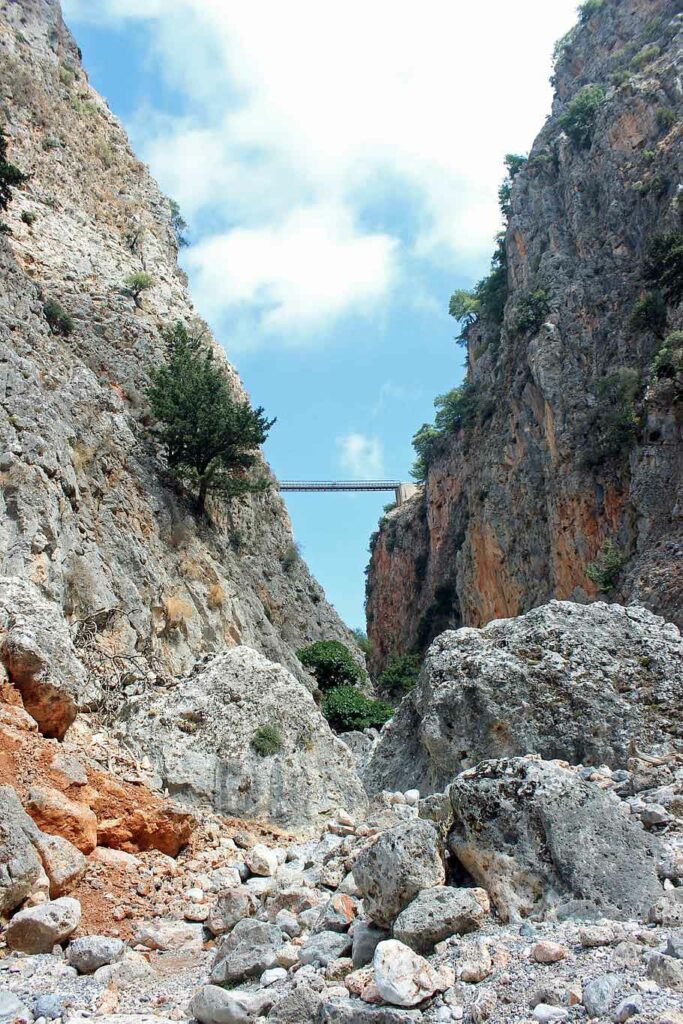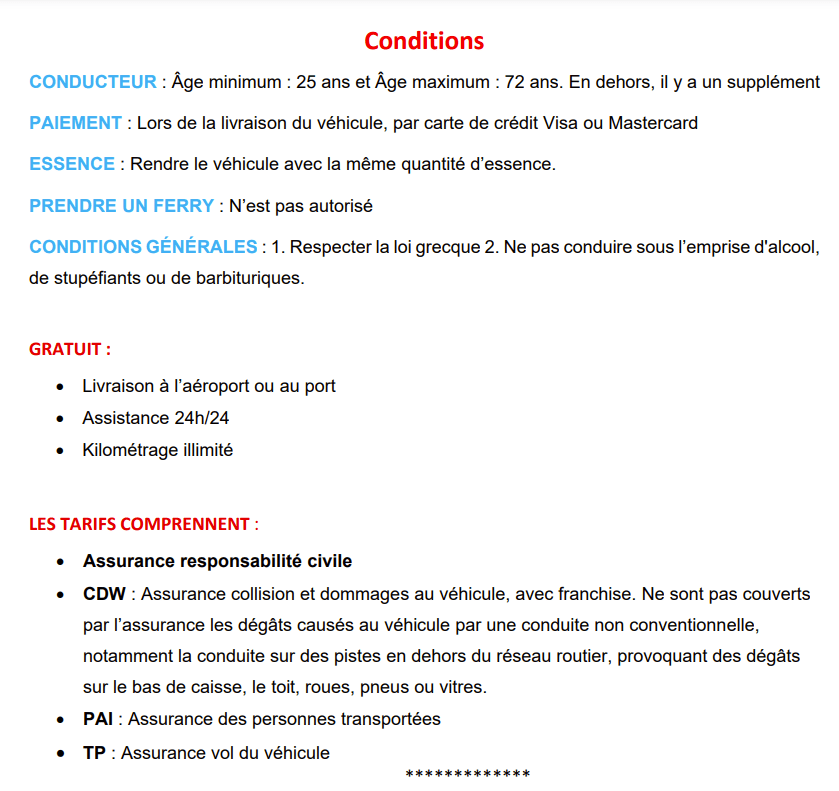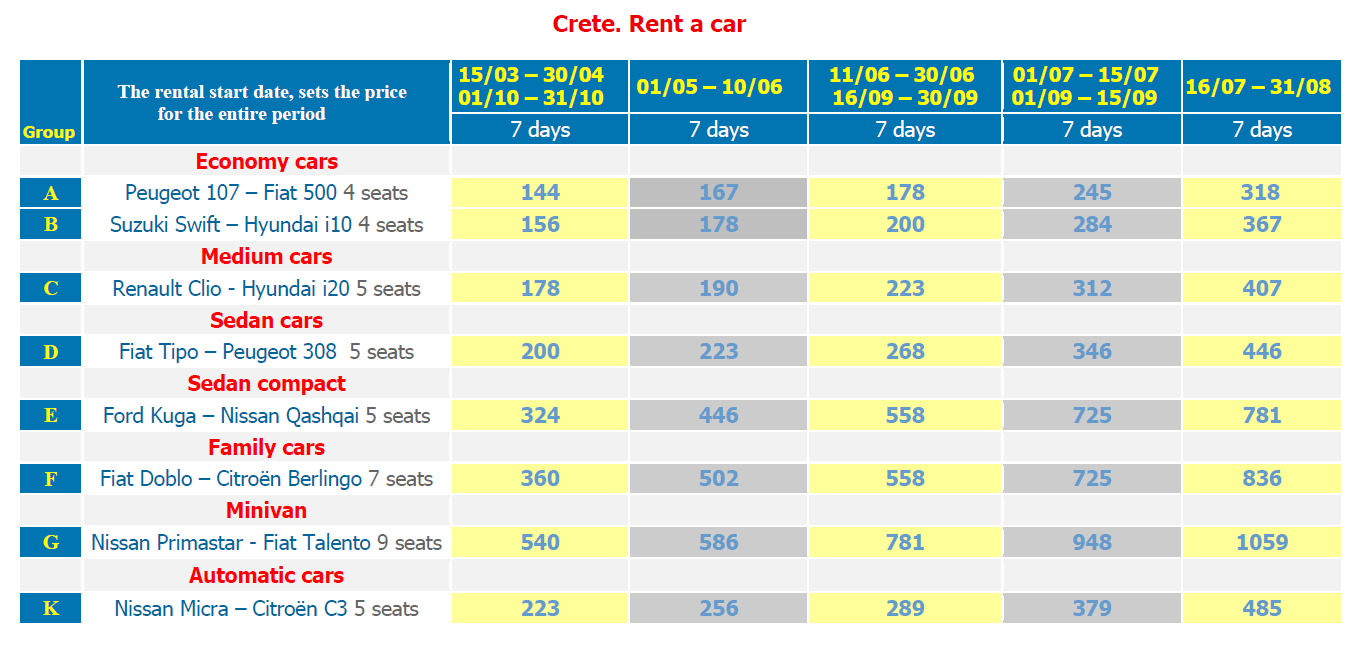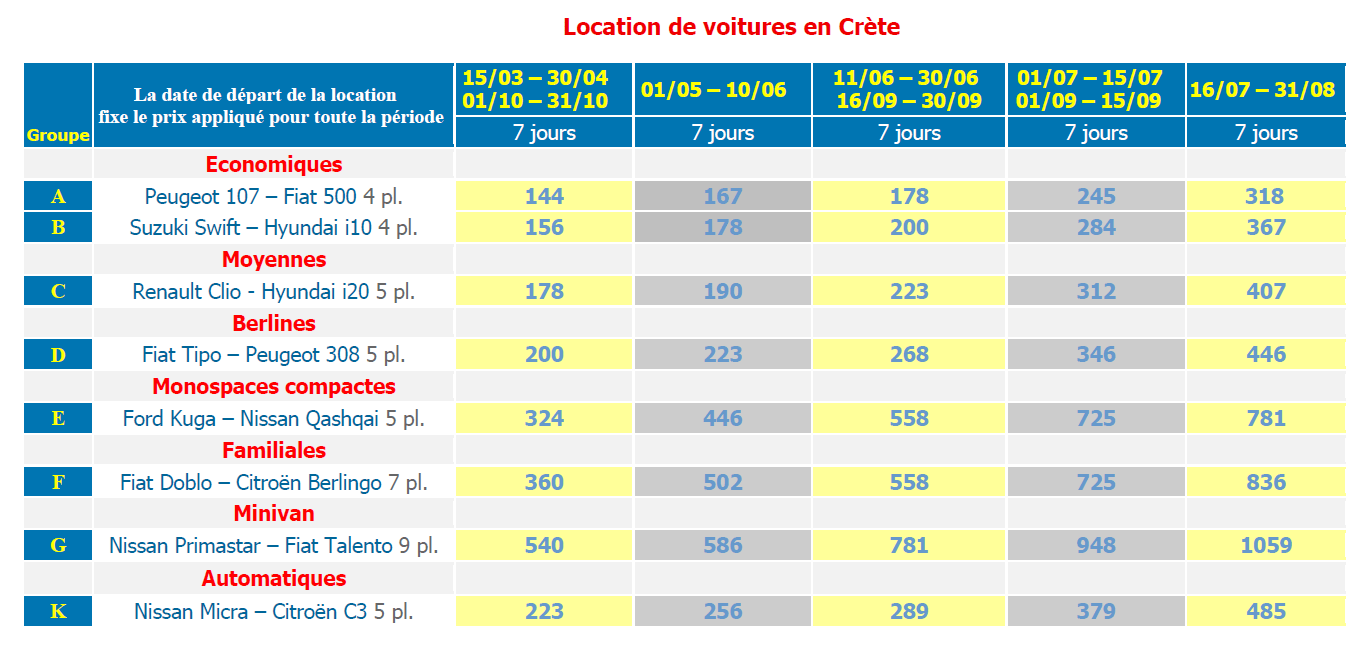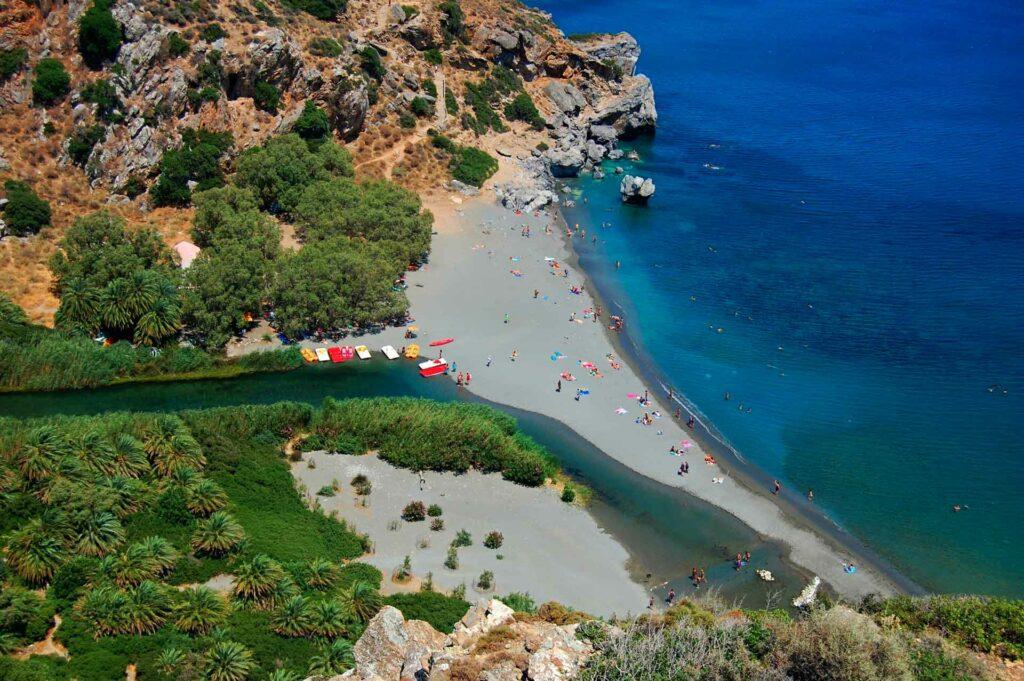Home » BLOG » Visit Crete » Frangokastello, Plakias, Preveli

Tour starting from Rethymnon:
Armeni, Spili, Frangokastello, Plakias, Preveli
Armeni
A beautiful tour. Route to Frangokastello, Plakias, Preveli.
About 9 km south of Rethymnon, the Minoan cemetery d’Armeni. Get ready for a sight worth seeing: the most impressive Minoan cemetery in Crete. More than three hundred tombs, some of them of "royal size", dug into the soft rock and dating from the Late Minoan III period (1450 - 1100 BC). (see our page History of Crete).
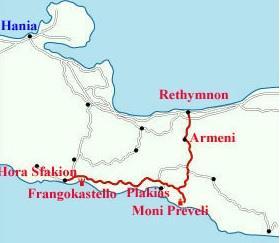
They have yielded many treasures: vases, weapons, decorated clay coffins, jewellery and miniature objects. They can be seen in the Archaeological Museum of Rethymnon.
Surely such a large and well-designed cemetery should belong to a large city, but to date, that city has not been discovered.

The village of Armeni was first inhabited in 961 by the Armenian soldiers of the Byzantine general Nicephorus Fokas.
Byzantium realised that the Arab occupation of the island from 824 to 961 had altered the Christian character of the Cretans, who were converted by force, and after driving out the occupiers, it installed Christians from the Byzantine Empire.
Spili
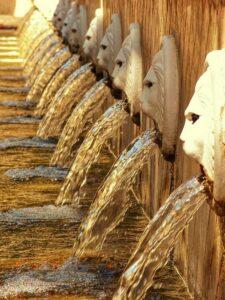
Continuing south on the main road, after 30 minutes you will reach
Continuing south on the main road, after 15 to 30 minutes you will reach Spili. This is the place to stop for sure! Under the Vorizis mountain, in the centre of the village, you will find a beautiful setting. A large, eye-catching square with two old plane trees and a Venetian water fountain with 25 lions' heads remind visitors of similar structures in St. Mark's Square in Venice.
Sit down at a café in the square, and take time to enjoy the local life.
Plakias
A little before Spili, two destinations by the sea are worth a visit. The village of Plakias and the site of Frangokastello.
Plakias, was an isolated village at the end of the world, 6 inhabitants (fishermen) in 1961, and almost 200 today and many more in summer. An exceptional natural site, with a panoramic view of the bay, long and varied beaches, and an unforgettable sunset. But also very exposed to the meltem, a blessing for windsurfing and kitesurfing enthusiasts.

Plakias has developed a lot in recent years with the arrival of tourists.
Hiking, horseback riding, exploring caves and gorges, scuba diving, and daily boat connections to Preveli, Chora Sfakion, Loutro, Agia Roumeli and the Samaria Gorge. In Plakias you will find taverns serving fresh fish, traditional and international cuisine, souvenir shops, bars, discos and beaches with umbrellas and sun beds. At the end of the main beach, nudism is also allowed.
Frangokastello
Frangokastello is a Venetian fort (Venetian presence in Crete from 1204-1645 and then Turkish occupation until 1898), built in 1370, it was never used, at least by the Venetians!

It was not until 450 years later that an action justified the existence of the fort. It was the astonishing battle of Frangokastello (1828), which pitted the Turkish army, led by Mustafa Pasha, against a Greek liberation force.
A legend says that the ghosts of slain Greek soldiers, the drosoulites, ("dew shadows" in Greek) appear at dawn on the surrounding mountains...
Frangokastello remains in very good condition today, thanks to the last repairs carried out by the Turks in 1866. Above the door, a somewhat worn stone can be seen, on which are engraved the Lion of Saint Mark and two coats of arms belonging to Venetian feudal lords.
And of course, the large sandy beach in front of the famous Frangokastello fort.
Preveli
Back to Plakias, and 10km away, the monastery of Preveli
Back to Plakias, and 10km away, the monastery of Preveli. Founded in 1594 and completed in 1701, destroyed, rebuilt and modified, this monastery was positioned in a secluded spot with an excellent view of the sea. Today, only two monks live in the "upper" monastery, while the lower monastery of Preveli is abandoned.
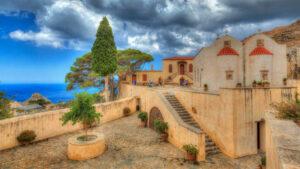
Its history is eventful. Like most monasteries on Crete (or in Greece, for that matter), it has often served as a refuge for resistance fighters and even as a base of operations. During the Second World War, it offered protection to the Allies; it was here that they found refuge and it was from here that their departure from the island to Egypt was organised.
Today, the small but well-organised museum of the monastery contains many interesting pieces, precious relics that the monks were able to save from destruction. Among them is a silver-plated cross which, according to the story, is made of the wood of the Holy Cross and has the power to perform miracles...
Palm beach
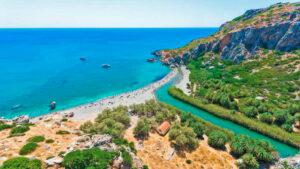
1.5 km after the "lower" Moni Preveli, you leave your car on the car park, and then you have a 15min walk downhill.
The view is indeed magnificent: many palm trees grow along a river that divides the beach into two parts and flows into the sea. In the 1960s it was a favourite spot for hippies. Today, the famous beach attracts too many visitors and campers and, especially in the high season, it is extremely crowded, especially on weekends in July and August.
And if you are brave, by boat or car, go to Agia Galini (Holy Serenity), very, even too, touristy in high season. (for buses, see KTEL)
Rent a car in Greece: Crete (Heraklion, Chania, Rethymnon, Agios Nikolaos) – Athens – Rhodes – Corfu – Mykonos – Santorini – Thessaloniki – Preveza/Aktion/Lefkada – Patras/Araxos – Kalamata – Paros – Syros – Kos – Naxos – Lesbos – Thassos – Zakynthos/Zante

